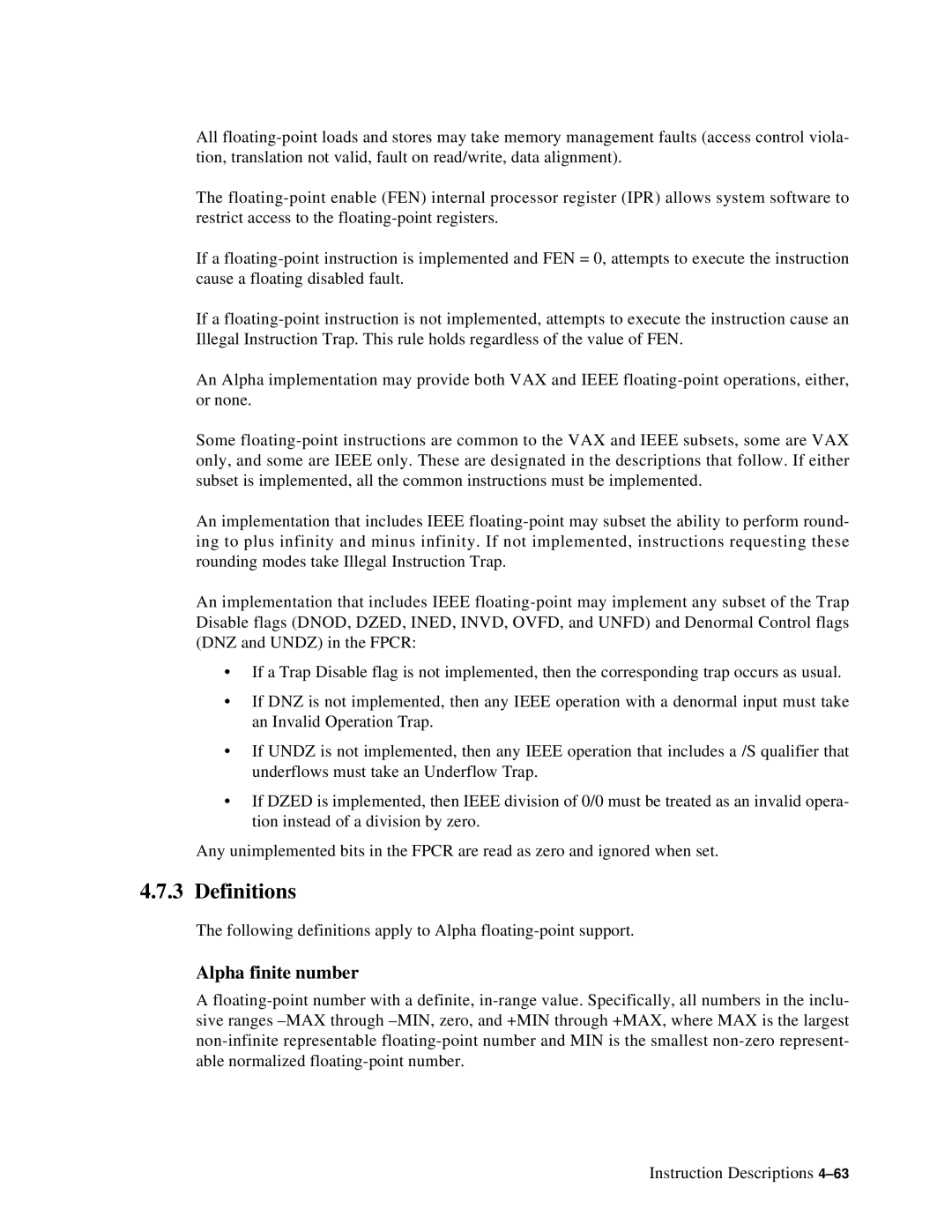All
The
If a
If a
An Alpha implementation may provide both VAX and IEEE
Some
An implementation that includes IEEE
An implementation that includes IEEE
•If a Trap Disable flag is not implemented, then the corresponding trap occurs as usual.
•If DNZ is not implemented, then any IEEE operation with a denormal input must take an Invalid Operation Trap.
•If UNDZ is not implemented, then any IEEE operation that includes a /S qualifier that underflows must take an Underflow Trap.
•If DZED is implemented, then IEEE division of 0/0 must be treated as an invalid opera- tion instead of a division by zero.
Any unimplemented bits in the FPCR are read as zero and ignored when set.
4.7.3 Definitions
The following definitions apply to Alpha
Alpha finite number
A
Instruction Descriptions
